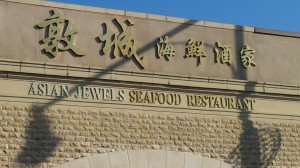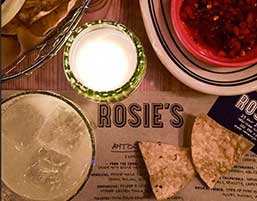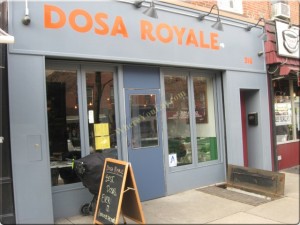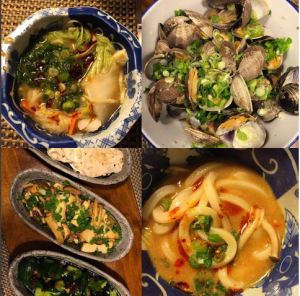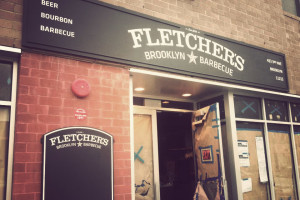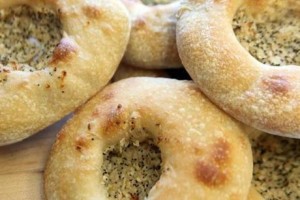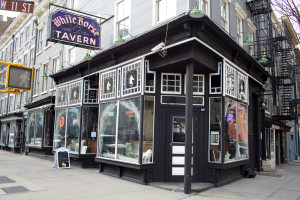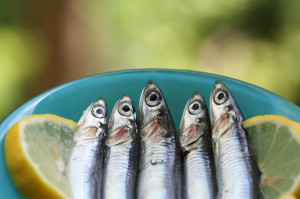SJ suggested dim sum brunch in Flushing, the Queens neighborhood that is populated by Chinese (and some Koreans). Chinatown in Manhattan seems like a Chinese neighborhood. Flushing is China. HG. a lover of Chinese food, believes Flushing, block by block, has the best dining in New York. SJ led HG/BSK to Asian Jewels Seafood Restaurant, known to many as the top dim sum restaurant in New York. A huge space seating hundreds of happy diners. Busy women steer carts laden with good things. HG was blown away. Every dim sum dish was perfection. Clusters of juicy shrimp in silken wonton wrappers. Har Gow. Shumai. Tiny squid in seafood sauce. Pork dumplings. Vegetable dumplings. Fish topping slices of tofu. And, more and more and more. As SJ and BSK pushed their chairs away from the table, HG was happy to consume a scallion topped bowl of congee (best ever) and a dessert of warm tapioca pudding with a caramelized crust. SJ will soon be visiting Hong Kong, alleged world capital of dim sum. HG doubts Hong Kong can top Asian Jewels. HG awaits SJ’s balanced judgment. After brunch, SJ motored through some Brooklyn neighborhoods that illustrate the borough’s diversity being challenged by a mad maelstrom of gentrification. Greenpoint (still some signs sign of the indigenous population of Polish immigrants). Hipster and foodie Williamsburg. Jewish Chassidic Williamsburg, a glimpse into Eastern European “shetls” of yesteryear. African-American Bed-Stuy, still rough around the edges, but quickly gentrifying as real estate values escalate. Tree lined Ft. Greene. The brownstone streets of Boerum Hill, Cobble Hill and Carroll Gardens. The low rise quality and the architectural uniformity of these neighborhoods have a European ambiance and sense of household comfort.
Asian Jewels Seafood Restaurant
December 16th, 2015 § 0 comments § permalink
Rosie’s
December 15th, 2015 § 0 comments § permalink
Dined at daughter Victoria’s latest venture, Rosie’s Sunday night with HG’s nephew Paul Freeman, his wife Vicki, daughter Staci—plus BSK, SJ, EM and family. Rosie’s is the result of Victoria’s husband/partner/head chef Marc Meyer’s immersion into and love for the cuisine of Mexico. First things first: The space is vast and joyous. Feels like a plaza in front of a Mexican cathedral with enticing food aromas scenting the air. It all opens up in summer weather to create a fiesta atmosphere. The drink: Margaritas as they should be. Food: Mexican– not Tex-Mex. Ceviches (scallop and swordfish). Guacamole of the gods. Shrimp in robust sauce. Calamairi enhanced by unusual varieties of chiles. Fish, mushroom, pork and chicken tacos. This isn’t Taco Bell. Each taco has succulent, original flavor. HG tasted and mused: “So, this is what knowing Mexicans have been eating all these years while we ignorant gringos have been eating pallid imitations.” The tacos are freshly made each day and cooked on a traditional taco grill. You can taste the difference. HG is lucky. Loves his family (and hopes they tolerate him). Dining en famille gives HG great pleasure. Wishes it could happen more often.
Dosa Royale
December 15th, 2015 § 2 comments § permalink
A dosa is a delicious food staple from South India. Basically, it is big, round crepe-like lentil and rice flour pancake. It is freshly cooked on an oiled griddle and served plain or rolled around a variety of fillings–fish, meat, chicken or vegetables. The dosa is dipped into “sambar,” a rich, soupy dip and accompanied by a variety of chutneys. HG’s favorite brunch when HG lived in Vancouver, B.C., was a dosa at Chutney Villa in the Mt. Pleasant neighborhood. The restaurant, run by a warm and friendly Indian woman, was a hundred yards from HG/BSK’s loft (best views in Vancouver). Few things were more delightful on a rainy (very frequent) Vancouver morning, than eating dosa, sipping chai and reading the Toronto Globe and Mail newspaper. HG revived these memories with a Sunday brunch at Dosa Royale on Court Street in the Cobble Hill neighborhood of Brooklyn. Tucked at a comfortable round table overlooking the colorful street scene and attended by a gentle young waitperson, HG devoured a very large, crisp edged dosa rolled around a filling of spinach and paneer (a white Indian cheese). Very good sambar and chutneys. HG sipped chai, read the Sunday New York Times, people watched. Many young Moms and Dads with their babies. Lots of beards. HG strolled along lively Court Street and then veered over to Smith, anther street lined with shops and restaurants. Bars were crowded on this grey Sunday with loud fans watching pro football games on TV. Much elation over victories by the Jets and Eagles.
Heavenly Hot Pot
December 14th, 2015 § 0 comments § permalink
A dinner prepared by HG/BSK’s Japanese daughter-in-law, the exquisite Maiko Sakamoto, is a trip into celestial realms. It is a meal, always, of varied tastes and textures. Every ingredient has integrity. Flavors seem to gain intensity as the meal progresses. HG always leaves the table feeling happy and nourished. Surprisingly, HG never seems stuffed despite eating a considerable amount of food. This was the case last night when daughter Victoria left her restaurant duties in Manhattan to travel to Brooklyn and experience EM’s hot pot dinner with HG/BSK, SJ/EM and their family. Superb dining that began with chunks of lightly pickled cucumber dotted with EM’s home-made hot sauce; buttery strips of sautéed mushrooms; sliced lotus root salad with a light mayonaise dressing and a pot of steamed Manila clams swimming in a fragrant sea sauce of sake and butter. Victoria is a Pescatarian. No, this doesn’t refer to a religious or sexual preference. It means Victoria is a vegetarian who shuns meat but will eat fish and shellfish. (I.B. Singer, the late Nobel Prize-winning Yiddish author, was a Pescatarian and justified the practice by noting: “Fish have no souls.”) BSK is allergic to crustaceans. EM based the hotpot around Victoria and BSK’s dietary restrictions and promptly created a bubbling kombu and bonito broth. The diners stirred a lush sesame based sauce into their bowls of broth (plus judicious amounts of ponzu and the aforementioned hot sauce). A succession of ingredients were cooked in the broth: Cabbage, bok choy, mushrooms, tofu and pieces of cod. As these items cooked, the broth gained intensity. HG swallowed mouthfuls (between many sips of a cloudy, delicious Nigori sake). Finally, when all the ingredients were finished, EM tossed in a package of high quality Udon noodles to finish the meal. Dessert was comprised of pastries purchased at the very traditional, Italian bakery, Court Pastry Shop on Court Street. Spectacular almond studded biscotti. Great conclusion to a memorable meal.
Brooklyn Barbecue
December 14th, 2015 § 0 comments § permalink
Driving to Brooklyn on I-95 South, HG/BSK felt pangs of hunger as they whizzed by the Stratford, Conn., exit. Years ago, an eccentric Englishman set up a wonderful barbecue joint in Stratford that HG/BSK frequented on their many trips to New England. The Brit’s cue was authentic — he had become beguiled with Texas barbecue so the obsessive fellow spent more than a year eating in Texas and trying to learn the secrets of the pit masters. Don’t know whether the Texans cooperated with the foreigner but the Stratford barbecue was mighty tasty. (He later closed the Stratford operation, opened a place in Long Island City, sold barbecue at Zabar’s and then disappeared. Don’t know if he brought ‘cue back to Britain). In any case, when HG/BSK met SJ, grandson Handsome Haru, granddaughter Adorable Teru, there was some delightful serendipity. A hungry Haru asked for barbecue and within minutes the group was seated at Fletcher’s Brooklyn Barbecue in Park Slope. Great barbecue sourced form organic farmers who raise happy animals. Ribs. Brisket. Pulled pork. Hot links. Plus sides of beans (best ever), mac and cheese, pickles, cole slaw. Iced tea. The real deal. A hearty introductory meal in Brooklyn, new world capital of excellent eating. Tonight, Exquisite Maiko, HG/BSK’s talented daughter-in-law, will be preparing a Japanese hot pot of fish, tofu and vegetables. Pastries from an old fashioned Court Street Italian bakery will follow. SJ promises dim sum in Flushing soon. Are you turning a nice shade of envy green?
Memories of Dolph
December 12th, 2015 § 1 comment § permalink
Here is an improbable fact. HG once drove to the basket and scored while being guarded by the great basketball player (Hall of Famer) Dolph Schayes. This happened in the gym of Creston Junior High School in The Bronx when HG was 13 and Dolph was 14. HG was aided in the score by teammate Jerry Tenney (later a prominent New York real estate investor) who gave Dolph a push. Young Dolph was very tall, gawky and awkward. HG liked the smart, untalented young man. HG was present when Dolph made his high school debut as the center of the talented De Witt Clinton High School basketball team. Dolph had replaced graduating center Stretch Durant, a fan favorite. Still awkward, Dolph was not well received. But, Dolph soon got better and better. And, better. Soon, he was equal to the exciting Joel Kaufman with whom Dolph played at Clinton and N.Y.U.. HG was often present when Dolph (with the Syracuse Nats) came to New York to bedevil the Knicks. He had become a great professional star, deadly from inside and outside, a solid defender, deft passer, never static but always in motion. Dolph was the prototype of today’s power forwards. HG was sorry to read his obituary this week and bemused by the fact Dolph earned a total of $250,000 for his entire 16-year career as a pro star (12 times an NBA All Star and voted as one of the 50 Greatest Players in NBA history). Great player’s career timing was off.
Ray Of Sunshine
December 2nd, 2015 § 0 comments § permalink
Some pleasant news for a change. The beloved Bialy is making a comeback (at least in New York, although they never really traveled beyond that city’s borders). The Bialy (full name is “Bialyostoker kuchen”) is a roll with an onion flavor (plus some fried onions clinging to the surface) and a chew like the crust of a very good pizza. It was created by Jews toward the end of the 19th century in the Polish city of Bialyostok. Jewish immigrants brought it to New York’s lower east side at the turn of the century and it quickly became a New York staple. For many decades, New York’s Jewish and non-Jewish working population started their day fueled by coffee and a “Bialy with a shmear (cream cheese).” Sadly, true bialys virtually disappeared a few years ago. Now, it’s back. Kossar’s, once the only reliable bialy source in New York (founded in 1936), closed but will reopen this year at a new and expanded space on Grand Street. Meanwhile (according to Jewish food authority Leah Koenig), Hot Bread Kitchen is selling good bialys at various food markets. In Brooklyn, Shelsky’s (the appetizing store) and Mile End (the delicatessen) are offering authentic bialys. Bagels, of course, are now universal. Horrors like chocolate chip bagels and blueberry bagels can be found at every supermarket. Of course, these bear no resemblance to the old fashioned boiled and then baked New York bagel. HG was never fond of bagels, either those of yesteryear or today’s aberrations. Always loved bialys. Kossar’s promises a revamped website for efficient ordering of bialys online. Happy news.
Hangouts
November 7th, 2015 § 0 comments § permalink
HG misses a certain type of codified New York City hangout for journalists, writers, poets and theater people. The species was exemplified by Elaine’s on Second Avenue where Woody Allen and scores of writers and performers received special treatment from the owner, Elaine Kaufman. The food was indifferent but HG enjoyed Elaine’s rough edged charm. Like HG, Elaine was a product of The Bronx and HG often greeted her with the soubriquet: “Elaine, the shapely Evander Childs alumna.” (Evander Childs being the name of a Bronx high school) She died in 2011 and the place was refurbished under new owners. Don’t believe it has recaptured the old ambiance. HG was lucky to spend some time with Elaine (some months before her death) at Le Veau d’ Or, the old time French bistro on E. 61st Street. HG had just finished lunching with SJ when Elaine came in. The two New York oldsters had some laughs and much cognac drinking. She, like her eatery, was an original. Pre-dating Elaine’s was Costello’s, a bar on Third Avenue and 44th Street. It opened when the El rumbled overhead and became a favorite with the staff of the New Yorker and their pals. Became a tourist attraction after James Thurber paid a Depression-era bar bill, by painting a 24 foot by 24 foot mural of his “War of the Sexes.” A.J.Leibling, Ernest Hemingway and John O’Hara drank there. According to legend, Hemingway broke his walking stick over O’Hara’s head. Details are sketchy. Like many good things in New York, Costello’s was demolished to make way for an office skyscraper. The mural disappeared. An art world mystery. Cedar Bar (never called Cedar Tavern) has disappeared from Greenwich Village’s University Place. It was the hangout of Motherwell, De Kooning, Pollock, Kline, Rothko and other distinguished artists (they were just gaining renown in the 50’s and 60’s). They were a hard drinking crowd much prone to fisticuffs. Lee Krasner, Pollock’s widow and a wonderful painter in her own right, said of the habitués: “They treated women like cattle.” HG would take HG’s little daughter, Victoria ,there on Saturday afternoon outings. HG would drink martinis and Victoria, perched on the bar, would eat peanuts and smile at her adult admirers. Presumably, Victoria’s early exposure to restaurants and strong drink has spurred her and chef/husband, Marc Meyer, to own and run four highly regarded New York restaurants: Cookshop, Vic’s, Hundred Acres and Rosie’s. Another Village hangout of artists, writer and poets (namely Dylan Thomas), was the White Horse Tavern on Hudson Street. Became famous for the presence of Thomas and Delmore Schwartz. Legend has it that Thomas consumed 18 shots of whiskey before walking (or stumbling) to his death.Though strongly identified with Thomas, it was actor Charles Laughton who made it famous. He would give away White Horse beer mugs to friends and fans. White Horse is still operating. Not very literary or poetic, it’s favored by college students. Best of the Village hangouts catering to journalists and writers, was the Lion’s Head on Christopher Street. Pete Hamill, Jimmy Breslin, Joe Flaherty, Frank McCourt, Norman Mailer, Sidney Zion, Vic Ziegel, Dennis Duggan and many others hung there. (An aside: Duggan reported for the New York Times and Newsday and was a fount of New York lore. HG was disturbed by Duggan’s unhealthy lifestyle and lured him to a gym on E. 45th Street where HG was a regular. Dennis didn’t like the mandatory exercises or the spartan atmosphere. After ten minutes, he said: “Okay. I came to your lousy gym. Can I have a drink now?”) The Lion’s Head closed some years ago but there’s now a Lion’s Head on Amsterdam Avenue much frequented by Columbia students. When HG was a journalist in the early 1950’s, HG spent much time at Artists & Writers (always called Bleeck’s) on W. 41st street near the offices of the old New York Herald-Tribune. Served very good German food and the convivial Trib journalists loved playing “the match game.” Lucius Beebe, the society columnist and elegant dandy, played with three custom made golden matches nestled in a velvet case. A class act. All of this has been swept away by time. Still functioning is Sardi’s, the theater restaurant a few blocks north of Artists & Writers. The endearing Vincent Sardi is gone and the food has gone downhill. A shadow of its former self. Lindy’s, Stage Delicatessen, Carnegie Delicatessen in the West 50’s, is where you found comics, song writers, press agents, bookmakers, gamblers. Lindy’s and Stage are gone and the Carnegie flourishes, selling overstuffed pastrami sandwiches to tourists. Russian Tea Room on W. 57th Street is where the classical music and ballet communities gathered as well as famous actors, producers and directors. HG once saw Jackie Onassis and Mike Nichols enjoying the Wednesday special, Siberian Pelmenyi. (this was a type of small ravioli served in strong chicken broth reinforced with mustard and sour cream). RTR is now an overpriced, over fancy place that has lost its luster. The hip Russian Tea Room crowd shifted to the Cafe Edison, a down to earth eatery in the Hotel Edison. The cooking was down home New York Jewish and the customers called the Cafe “The Polish Tea Room.” Alas, it closed this year, another victim of the real estate steamroller. HG imagines that the new generations of writers and painters and actors have their own places to drink and revel in the New New York, but HG doesn’t know them and can only hope they have as much fun in them as HG had in his own time.
Ida Kopkind Freeman
November 2nd, 2015 § 1 comment § permalink
HG’s late Mom was a short, hefty woman with a big bosom and an ample bottom. Her marriage to HG’s father was not ideal but they remained married for more than a half century. For immigrant Jews of her generation divorce was non-existent. Chaika (later anglicized to “Ida”) Kopkind, was born in Plestyanitz, a “shtetl” (a Jewish village) in the Minsk province of Belorussia. She was one of three sisters in a family of seven children. Ida, her sister Feigel (“Fanny”) and brother Shmuel (“Samuel”) emigrated to the United States in the early 1900’s. Some of the family died in the pogroms and disruptions following the Russian revolution and the ensuing civil war. The rest were murdered by the Nazis during World War Two. There is no trace of her family left in Russia. (HG’s father’s family, the Freimann family [later anglicized to “Freeman”] fared better. A few members survived including a very old man who recalled HG’s father by his boyhood nickname, “Grisha”.) Ida loved the lively Lower East Side of New York where she lived in a tenement with another immigrant young woman, Maryasha (“Marie”). From her earliest childhood, Ida was nimble with a needle and thread (later a sewing machine). She found employment as a sewing machine “operator” in a clothing factory and her speed and skill gave her a reasonable income doing piece work. (Some of her unlucky friends died in the tragic Triangle Shirtwaist Factory fire, an event that galvanized the Jewish immigrants and led to the unionization of the garment industry). When Ida married Harry Freeman, a skilled cutter in a woman’s coat factory, the young couple moved away from the teeming Lower East Side to the healthier neighborhoods of The Bronx. And, that’s where they raised a family and lived for the great majority of their lives. HG’s Mom was a master of household skills. She had the powerful energy needed in those days of low incomes and no labor saving devices. The HG home was always surgically clean. Laundry was done by hand and dried on clothes lines. Socks were darned and clothing rips were repaired. Mom made shirts, dresses, night gowns on her busy Singer Sewing Machine as well as curtains, table cloths, slip covers, bed covers, etc. She prepared robust food for the HG family of five. The cuisine was Eastern European/Jewish Great stuffed cabbage and chopped liver. Incomparable gefilte fish. Borscht. Schav. Chicken soup with matzo balls. Brisket and gravy.The best blintzes ever. Stuffed derma (a chicken neck stuffed with matzo meal, onions, garlic and spices). Knaidlach (hefty matzo meal dumplings). Mom pickled herring, made her own noodles, baked apple pies, honey cake, rugelach. Ginger and honey glazed pastries were little HG’s favorite. The only vegetable HG recalls was a carrot dish called “tzimmes”. (carrot shavings were baked in a casserole with honey, ginger and cinnamon). Sorry, there were other vegetables. So terrible, HG has blanked them from memory (almost). A big bargain at a local supermarket were “mystery” cans. These were canned foods that had been knocked about and lost their identifying labels. They cost pennies. Mom believed she had a secret talent. She would shake the cans. From the sound she would determine if they contained dessert choices–canned peaches, plums, cherries, prunes. She was often correct but often erred. That meant she opened a can at dessert time. Unfortunately, it might contain brussels sprouts or lima beans. Depression era. Waste not. Want not. The family ate these cold vegetables for dessert. Mom rendered lots of chicken fat and the flavorful stuff played a big role in her cooking. There was a brief, unhappy period when Mom served “American health” food. She was influenced by a radio program, “You Are What You Eat,” hosted by nutrition expert Dr. Victor Lindlahr. Fortunately, under pressure from family protests, the good chicken fat cuisine resumed. Ida did not shower little HG with praise. Mrs. Brownstein, HG’s first grade teacher, told Mom at an obligatory school visit, that HG was a brilliant, gifted child. Mom’s response: “So, if you’re so smart you should help out around the house. And, you should learn to tie your shoelaces so you don’t trip.” Later, when HG was 11, the young fellow competed in the Americana Quiz, a history contest held in New York’s elementary schools. HG was judged best in The Bronx so was eligible to compete for The Best In New York Prize with four other young contenders, one each from Staten Island, Queens, Manhattan and Brooklyn. The event was held in the studio of WNYC, the New York City radio station and hosted by the city’s colorful Mayor Fiorello La Guardia, “The Little Flower.” HG’s Mom was in the audience. HG came in second, beaten by a smart little girl from Brooklyn. The Mayor shook HG’s hand, praised his effort, and gave him the second prize, an American history book by Charles A. Beard. Mom’s comment: “So, why didn’t you win?” HG discussed this incident and others relating to his Mom with a Freudian psychoanalyst. Her mysteries were only partially revealed.
The Anchovy
November 1st, 2015 § 0 comments § permalink
Recently, HG ordered Caesar Salad at a Santa Fe restaurant. The waiter asked: “Would you like it without anchovies?” HG was dismayed. After all, a Caesar Salad is unthinkable without the delicious salty addition of anchovies. But, the waiter was only doing his duty. There are many people who detest the salty oiliness of anchovies. HG loves anchovies, both unadorned and as a flavor enhancer of many foods. HG thought about the magical anchovy as HG enjoyed BSK’s sublime version of penne with broccoli. Here’s how BSK does it. First, BSK cuts short lengths of the broccoli stems. Not the very tough ends but the green, slimmer portion of the stems. They go into a food processor with shallots, parsley and garlic. This miix is then gently cooked in a sauce pan with olive oil and a goodly amount of chopped anchovy. The savory sofrito is thinned with pasta water after the penne is barely al dente and completes its cooking in the pan with slightly firm broccoli florets The dish is topped with chopped ripe tomatoes and mozzarella cheese (heated for a minute or two until the cheese softens). A sprinkle of red pepper flakes. The anchovies don’t give the dish a fishy overtone.Instead, they sharpen all the other flavors. Anchovies perform this function in many other dishes. (HG is very fond of pizza topped with anchovies). The French often lard a leg of lamb (gigot) with anchovies. Haven’t tried it but HG gathers the anchovies bring flavor to the lamb without overwhelming it and create the basis for a tasty sauce. One of HG’s favorite appetizers is anchovies with roasted red peppers as prepared in New York’s old time Italian restaurants. The peppers were roasted over an open flame until the skins were blackened. Popped in a paper bag for a few moments (the steaming in the bag makes it easier to remove the skins). Marinated for a bit with olive oil and a dash of vinegar. Served with a topping of anchovies. Best version was served by a long gone Italian restaurant on E. Houston Street (Lombardi’s?).They also served Mozarella en Carozza (breaded and fried cubes of mozzarella) with an anchovy sauce and Bagna Cauda (a warm dip of olive oil, butter, anchovies and garlic in which you dipped raw vegetables). Anchovy shopping advice from HG. There are heavily salted anchovies sold from barrels in a few older New York Italian grocers in Manhattan and Brooklyn. They have to be soaked in many changes of water to make them edible. Not worth it. Instead, buy jarred Italian anchovies. Don’t buy tinned anchovies. HG has enjoyed “Alici” in Italy. These are fresh, uncured anchovies with a mild taste. “Boquerones,” pale, unsalted anchovies pickled in vinegar are a staple at Spanish tapas bars. Dried anchovies are often used as a flavor base in many Japanese stocks — including Ramen. HG’s very beautiful granddaughter, Arianna R., was an elementary school student in Venice. School lunches are a serious matter in Italy. Her teacher deplored Arianna’s small appetite and said her minimal eating would make her look like an “acciughe” (anchovy). Today, the young woman has a robust appetite but retains a slim silhouette. Must be metabolism.
